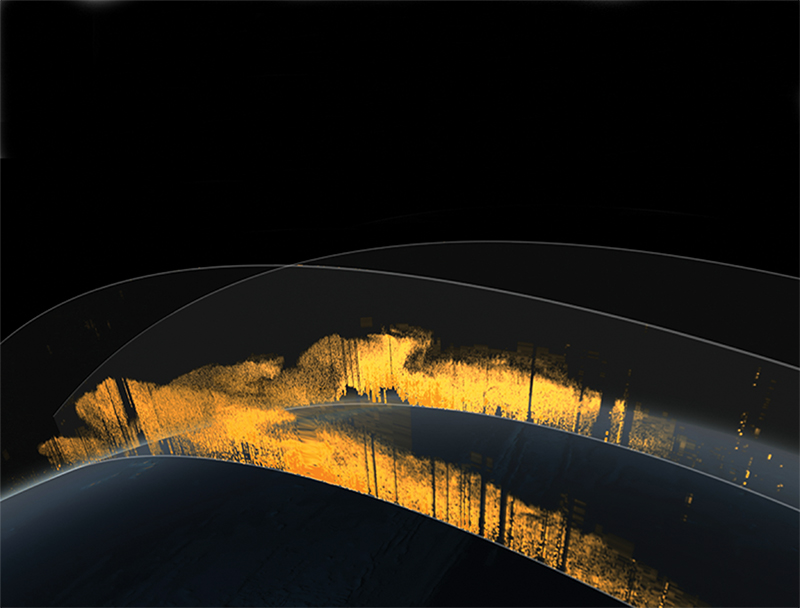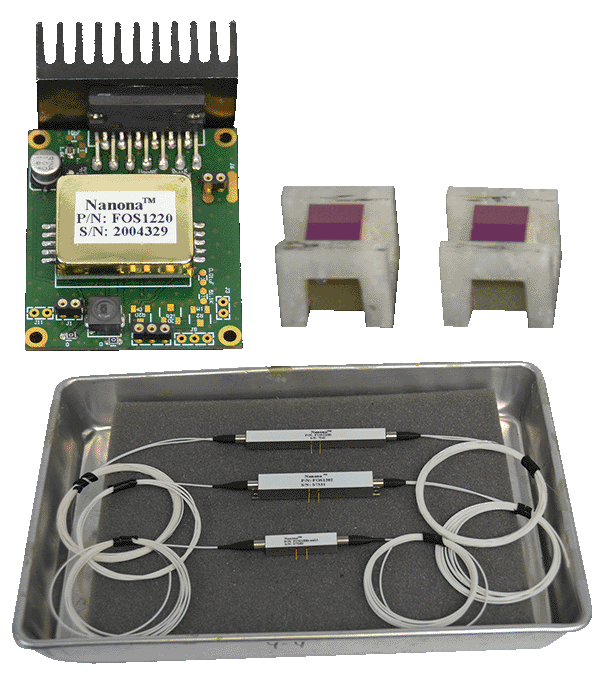
Electro-Optic Ceramic Creates High-Speed Fiber-Optic Networks
NASA Technology
By 2002, Corning Applied Technologies had developed a new electro-optic ceramic material, one that promised efficient, effective, rugged, low-cost optical components for a variety of uses. That year, however, Corning Inc. shut the subsidiary down before its new OptoCeramic could be tested and proven. The management and technical team formed its own company, Boston Applied Technologies Inc. (BATi), and in the same year, a contract with NASA’s Langley Research Center allowed the new business to demonstrate the technology that soon became the basis for some of its major product lines.
The Small Business Innovation Research (SBIR) contract with BATi, based in Woburn, Massachusetts, was for an electro-optic Q switch for an all-solid, portable lidar system that would be used to monitor the atmosphere.
A lidar is an object-detection system similar to radar that uses light instead of radio waves, sending out laser pulses and then catching their reflections. Specialized versions can calculate atmospheric composition and even temperature by measuring how the pulses are absorbed or backscattered.
A material is electro-optical when its refractive index can be changed with an applied electric field. According to the voltage applied to it, it can alter the color, polarization, and intensity of light. For electro-optic Q switches and other components, the material traditionally favored by industry has been single crystals such as potassium dihydrogen phosphate and lithium niobate.
Before it shut down, Corning Applied Technologies had been experimenting with its second-generation OptoCeramic material, known by its chemical name of lanthanum-modified lead magnesium niobate titanate or, more conveniently, PLMNT. This refined ceramic had the potential to offer better performance than its predecessors.
Its high response speed and large electro-optic effect—nearly 100 times higher than that of lithium niobate—were key to the lidar Q switch created under the SBIR contract, which was to offer an improved signal-to-noise ratio by sending up to a million pulses per second on a power supply as low as 100 volts.
In the Q switch application, which turns a laser beam into pulses, the electro-optic absorber is placed inside the laser’s resonator chamber. There, it rotates the polarization of the light to absorb and release the laser beam in pulses. One advantage of electro-optic Q switches in general is that they generate faster and more powerful pulses than a traditional Q switch.
Michael Krainak, head of the Laser and Electronic Optics Branch at Goddard Space Flight Center, explains the significance of a high pulse rate for lidar: “What you’re trying to do is get as much total lidar signal return energy as you can over a fixed integration time. You can get the same energy that way, but with a lower peak-power laser. This reduces the chance of laser damage.”
By sending and receiving a million small laser pulses rather than a hundred big ones, the system can collect as much or more total reflected energy with a much lower peak output and with a lower damage limit on the receiving components. Meanwhile, a lower operating voltage makes the system more reliable and efficient and less expensive, Krainak says.
“Because we have this material with a high electro-optic coefficient, we have the capability to reduce the voltage and make the laser much smaller and more compact,” adds BATi cofounder Kevin Zou.
Technology Transfer
“The NASA project, for sure, financially got us off the ground and verified the concept that got our electro-optic switch business growing,” Zou says. It was the new company’s first contract, and although NASA didn’t fund a Phase II SBIR contract, he says the project demonstrated that the ceramic worked as intended. BATi ran with what it had learned, using PLMNT to expand its line of various products, mostly for fiber-optic communication networks, into the high-speed optical switch business.
“Most of our commercial products are based on this OptoCeramic technology,” Zou says.
Among these are Eclipse variable optical attenuators, Acrobat polarization controllers, Equinox dynamic optical filters, and Nanona fast electro-optic switches. Other BATi products based on OptoCeramic technology include large-aperture tunable optical filters and polarization imagers. All these devices can be used in telecommunications, lidar, remote sensing, and other applications.
Benefits
In most photonic systems, speed is critical, Zou says. “If you compare them to similar products, nobody’s switches are as fast as ours.”
When a line goes down and the signal has to switch to a backup line, for example, “The faster the switch, the less data is lost,” he says. “When a high data-rate system is down, switching in nanoseconds or milliseconds makes a big difference.”
In tests, devices made with the company’s OptoCeramic materials have been proven reliable and rugged, surviving high humidity and repeated cycles of temperature swings from -40 to 70 °C (-40 to 158 °F) without degraded performance. Because the ceramic requires only a small electric field to change its optical properties, the devices are compact and easily controlled.
As an added advantage, being polycrystalline ceramics, the materials can be made by hot-pressing, a process much cheaper and easier than growing crystals such as lithium niobate.
In addition to telecommunication companies, BATi counts among its customers defense contractors, universities, and research institutes, and the company is planning to turn its electro-optic ceramics to the medical imaging business. Under two Small Business Technology Transfer contracts with Johnson Space Center in 2004, the company worked on a polarization imaging device for cell and tissue analysis and diagnostics that has been awarded two patents.
The device works by understanding how different substances alter the polarization of light differently, with each having its own “polarization signature” that can be used to identify it, Zou explains. Central to the medical imaging device, which BATi developed in cooperation with Catholic University of America and Georgetown University, is a fast-tunable phase retarder made of electro-optic ceramic. The company hopes the technology will prove useful not only for commercial medical applications, from early detection of diseased cells to microscopic tissue analysis, but also for industrial material research, target acquisition and identification for astronomy and defense, and NASA’s work in biological and medical molecular studies in microgravity.
All this from a substance BATi demonstrated for a NASA lidar system. “That contract gave us the initial push to get into electro-optical switching,” Zou says.

Boston Applied Technologies manufactures a variety of products, such as the high-speed, fiber-optic switches and free-space, mid-infrared Q switch cores seen here, using the electro-optic ceramic it first verified under an SBIR contract with Goddard Space Flight Center. Electronic control circuits like the one on the right drive the optical switches.

NASA uses lidar to monitor various conditions of the atmosphere, such as moisture, pollution, and temperature. In February 2014, Goddard Space Flight Center released a report on the amount of Saharan dust that crosses the Atlantic and nourishes the Amazon rainforest, based on images such as this, from the Cloud-Aerosol Lidar and Infrared Pathfinder Satellite Observation orbiter. Boston Applied Technologies first verified its trademark electro-optic ceramic technology with a Q-switch it developed for NASA’s lidar atmosphere imaging work.













